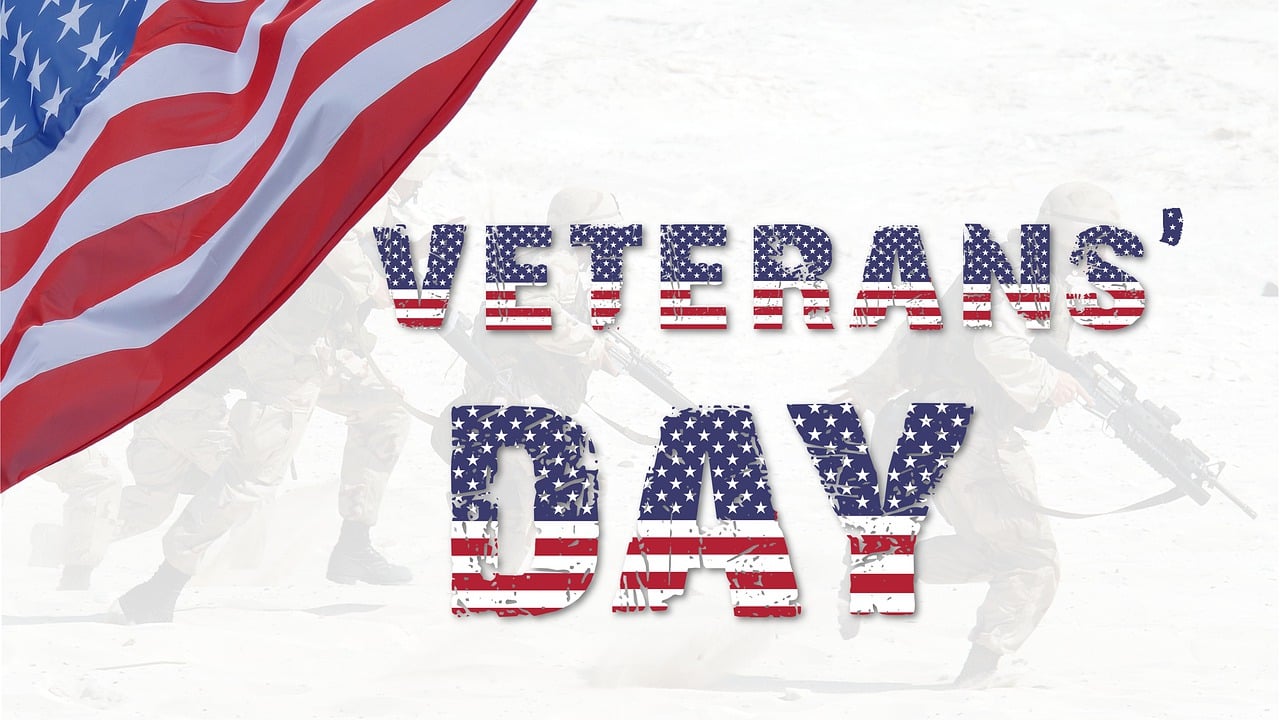
To understand how Veterans Day came about, we need to realize that the “Great War”, World War I (WWI) (1914-1918) had just been fought involving over 30 nations including the United States of America. We were joined by our friends or Allies including Italy, Great Britain, Russia, and others to fight the evil aggressors or Central powers, which included Germany, Austria-Hungary, Bulgaria, and the Ottoman Empire.
As World War I came to an end the tragic toll the war had taken became clear. WWI resulted in the loss of between 6 and 13 million lives, which included soldiers and civilian men, women, and children. The United States lost approximately 117,000 soldiers before a truce or cease fire was finally called. The Allies had won the war, but at what cost.[1]
On the 11th hour of the 11th day of the 11th month in 1918, Veterans Day was born from the smoldering ashes, beleaguered battlefields, and catastrophic loss of life that defined the beginning of the end of World War I – the “War to End all Wars” that had spanned a little more than four years.
In truth, Veterans Day began as Armistice Day as armistice literally means a truce or cease fire between opposing sides of a military conflict or war. Armistice Day was meant to be a day of thanksgiving to celebrate the end of war. Indeed, Armistice Day was celebrated by many countries following this great conflict and the signing of the official peace treaty known as the Treaty of Versailles — signed on June 28, 1919. Despite the official peace treaty date, the original date of November 11, 1918, kept a special place in the hearts of many Americans – a date signifying hope for the future and the real end of conflict.[2]
However, as days turned into months and months into years following WWI, Armistice Day would evolve into something new for Americans as it became clear that WWI was not the “War to End All Wars” as we had hoped and prayed – it was only the beginning. The faint echo and whispers of canon and artillery fire lingered in the minds of many. Yet, we as a nation would hold on to Armistice Day for a little while longer.
President Woodrow Wilson made sure Armistice Day would remain in the hearts of Americans as he proclaimed November 11, as the first commemoration of Armistice Day in November 1919. On Armistice Day, it was expected businesses and schools would remember the significance of the 11th hour of the 11th day of the 11th month each year by pausing their activities. Parades and public gatherings were encouraged.[3]

On November 11, 1921, an event occurred that had special relevance to Armistice Day and what we now call Veterans Day. On that day, an unidentified American soldier was laid to rest in Arlington National Cemetery representing our fallen unidentified soldiers whose remains were never recovered or identified. Symbolically, their final resting place is in the Tomb of the Unknown Soldier. Despite being unknown, their unselfish duty and ultimate sacrifice for this country and the people of this great nation will never be forgotten as the Tomb sarcophagus reads: “Here rests in honored glory an American soldier known but to God.” [4]
Continuing at the national level, legislation and Congress continued to mold and redefine Armistice Day. Armistice Day, as of June 4, 1926, would now be commemorated with thanksgiving, prayer, and activities designed to help unite nations through good will and mutual understanding. At this time, a proclamation called for the annual observance of Armistice Day. A Congressional act declared Armistice Day a Federal holiday on May 13, 1938 – “dedicated to the cause of world peace and to be hereafter celebrated and known as ‘Armistice Day.’” [5]
As the United States sadly entered a new era of war with World War II (1941-1945) and the Korean War (1950-1954), it became painstakingly obvious that the “Great War” would not be our last. More than 1 million American soldiers were killed or lost their lives in WWII and approximately 700,000 were injured.[6] And with the Korean War, additional lives were lost with many wounded American soldiers also returning home to face difficult mental and physical recoveries. After these two gruesome conflicts, Armistice Day officially became what we all know as Veterans Day on June 1, 1954, being signed into law by President Dwight D. Eisenhower. Yet, this was not the end of the story and more changes came about affecting Veterans Day.[7]
The United States Congress continued to affect a change on Veterans Day by passing the Uniform Monday Holiday Act in 1968. By passing this Act, Veterans Day along with Washington’s Birthday, Memorial Day, and Columbus Day were to set to fall on a Monday to ensure a long weekend for federal employees promoting tourism, travel, and appropriate celebration of these important national holidays. However, many people of this country were quite disgruntled with changing Veterans Day from November 11 to the arbitrary 4th Monday of October. People were confused and many state legislators disapproved of this change as it came into effect on October 25, 1971.[8]
By November 11, 1978, the previous decision affecting Veterans Day was reversed as a new law signed by President Gerald Ford in 1975 came into effect. It had become obvious to the leaders of this country that not only did November 11 have special historical significance, but it also had patriotic significance.[9]
Each Veterans Day, as celebrated today, is intended to remember those American soldiers who have honorably served or continue to serve their country during war or peacetime. Special recognition is bestowed upon these individuals—living or dead–who have unselfishly sacrificed and courageously served defending the freedoms, liberties, and borders of this great nation we call the United States of America. As an American Legion Post Commander, veteran, husband, and father, what I do will always be for God and Country assisting in the fight against evil and promoting safety, security, and freedom to men, women, and children of this land. I stand alongside and support all my military brothers and sisters each and every Veterans Day. We have a bond that cannot be broken. We stand for the flag — We stand for America.
For those who believe, I leave one last thing to consider:
I asked for strength, and God gave me difficulties to make me strong.
I asked for wisdom, and God gave me problems to learn to solve.
I asked for prosperity, and God gave me a brain and brawn to work.
I asked for courage, and God gave me dangers to overcome.
I asked for love, and God gave me people to help.
I asked for favors, and God gave me opportunities.
I received nothing I wanted
I received everything I needed.
Hazrat Inayat Khan, Indian poet and philosopher (1882-1927)
Citations
I’ve been surfing online more than three hours today, yet I never found any interesting article like
yours. It’s pretty worth enough for me. In my opinion, if all web owners and bloggers made good content
as you did, the net will be a lot more useful than ever
before.
Ms.Danielle Smith, I just wanted to say thank you for taking the time to comment on my article, “Veterans Day a Historical Perspective.” I had originally presented this post as a guest speaker during an organized venue. As I presented this article, I have to say my emotions were sitting just under the surface. How easily in these days our veterans are forgotten — not only their sacrifices but the sacrifices of their families. Hooray, to the men and women who can still appreciate the true meaning of Veterans Day! Once again, thank you.